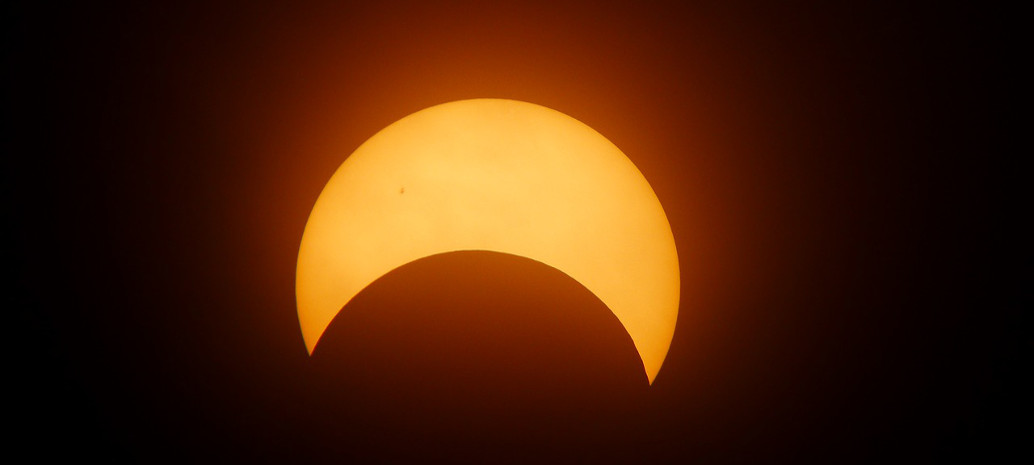On August 21, a total eclipse of the sun will cross the states of Oregon, Idaho and Wyoming, passing within hundreds of miles north of the largest deployment of solar PV in the Western Hemisphere.
California, which got 13% of its electricity from solar last year, will experience this is a partial solar eclipse, with 62-76% of the sun obscured at the peak of the eclipse, depending on the location within the state.
California’s grid operator is already getting ready for this event, which will result in a steep ramp down of solar generation and a corresponding increase in net load as the moon passes in front of the sun starting just after 9 AM, followed by an even steeper ramp up of solar as the eclipse passes, starting at 10:22 AM and lasting until noon.
By August, the California Independent System Operator (ISO) expects to have nearly 10 GW-AC of utility-scale solar online, as well as nearly 6 GW behind the meter. PV output is expected to fall by more than half as the moon passes in front of the sun, and then triple its output as the eclipse passes, resulting in solar generation ramping up nearly 8x as fast as the usual morning ramp.
Despite this dramatic change, California ISO does not expect any reliability issues from the event. The timing of the eclipse is somewhat fortuitous, as net power output also rises during the day, meaning that the late morning ramp down of other resources as solar output returns will be less steep.

Additionally, due to the phenomenon of the “duck curve”, California’s grid operator already has experience managing a steep ramp of electricity output, particularly as the sun goes down. This does not mean there will not be technical challenges.
“Operationally, the solar ramp during the eclipse is expected to increase the burden on other dispatchable resources including the regulating capability of the interconnected power system in terms of available regulation capacity, regulation speed and geographical location of reserves,” notes California ISO.
California ISO has a wide range of tools to deal with the eclipse, including procuring reserves, flexible gas plants, imports of electricity from other states and in-state hydro generation. Regulation reserves alone will be increased from 250 to 400 MW during three hours of the eclipse.
It will also be also a test for forecasting. California ISO is currently obtaining both behind-the-meter and utility-scale solar output forecasts from multiple providers, which will be fed through ISO’s process.
Fortunately for California, Europe has already been through all of this. On March 20, 2015 the continent experienced a partial solar eclipse, which severely limited the output of the nearly 90 GW of solar which was deployed across the continent at this time.
And despite Germany’s nearly 40 GW of installed solar experiencing a 66%-83% eclipse, the German and European grids survived the event with no major incidents.
This content is protected by copyright and may not be reused. If you want to cooperate with us and would like to reuse some of our content, please contact: editors@pv-magazine.com.



By submitting this form you agree to pv magazine using your data for the purposes of publishing your comment.
Your personal data will only be disclosed or otherwise transmitted to third parties for the purposes of spam filtering or if this is necessary for technical maintenance of the website. Any other transfer to third parties will not take place unless this is justified on the basis of applicable data protection regulations or if pv magazine is legally obliged to do so.
You may revoke this consent at any time with effect for the future, in which case your personal data will be deleted immediately. Otherwise, your data will be deleted if pv magazine has processed your request or the purpose of data storage is fulfilled.
Further information on data privacy can be found in our Data Protection Policy.